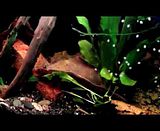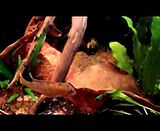Little over a week ago I removed all the cory's that I had with my Nijsseni's. Ever since, the female is doing her dances whenever the male passes by and she has been going in and out of the same cave all the time. The male is swimming around with beautiful colors, ranging from his normal blueish, to blue with vertical bands on his back, to almost gold. He seems to be very excited, swimming around frantically. Both of them show aggression from time to time to the pair of Colisa Chuna and the juvenile A. Lineatus that are also in the aquarium.
My guess would be that this is (pre) courtship behavior, however it's been going on for almost ten days and it doesn't seem to lead to anything. From what I understood courtship behavior takes much less time.
Can anyone tell me how to interpret this behavior?
Thank you!
My guess would be that this is (pre) courtship behavior, however it's been going on for almost ten days and it doesn't seem to lead to anything. From what I understood courtship behavior takes much less time.
Can anyone tell me how to interpret this behavior?
Thank you!






